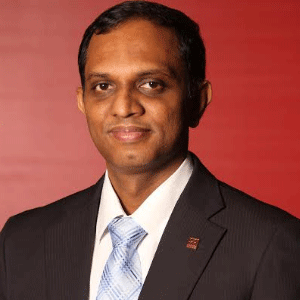THANK YOU FOR SUBSCRIBING

Mazlan Abbas, CEO, Favoriot
Think “Lean Methodology”–Build, Measure, and Learn. I think that’s how we should build Smart Cities. We can no longer take the risks of building projects fast and turn them into “white elephants”. Most of the times, smart cities deployment failed - though we planned well, we failed in execution. Failed in getting the citizens to use the facilities. Failed in maintaining and sustaining the business model.
The maturity of acceptance of city dwellers is also an essential element. I don’t think we can just replicate the success of one Smart City in one country to another country without proper understanding the priorities of the citizens due to the ethnicity and maturity of the city inhabitants.
To avoid such issues, let’s use the “lean methodology” in developing Smart Cities. The key element is the MVP (Minimum Viable Product), or in this case, we might call it “Minimum Viable City.” Here are the steps:
• Develop a hypothesis by getting citizens inputs. Provide the citizen with engagement tools that allow them to engage with the government or city authorities
• Collect the data and analyse the citizen’s priorities
• Build the “Minimum Viable City” Smart Applications using physical sensors
• Measure the impact and usefulness
• Learn from the citizens whether their pain points are adequately addressed. Iterate the process again
• Scale up the deployment
But, what’s the best tools to get citizen’s inputs? Many citizen engagement mobile apps (example–identifying pothole, drainage, faulty traffic light, illegal parking, etc.) that can geo-tag the location of the issues failed simply because it’s unable to sustain the popularity, usage, and continuous enhancement. Why? Below are tips for the city authorities to consider avoiding and repeating these failures:
Buy-in from Both Segments i.e. Officials and Citizens
It requires the active participation of both parties. It’s like the “chicken or egg” question. Who starts first? Residents felt that their complaints would fall on deaf ears of the local councils. The local authorities felt that the citizens need to channel their grouses to a proper channel; not letting their anger out on social media posts which tend to become viral.
Handling Continuous Development and Future Enhancement of the Backend System Requires Sustainable IT Support Resources
Publicity
If you ask 100 or 1000 people on the streets whether they have heard about such application, we can almost guarantee that none have heard that. It’s also the fault of local councils, who only use their official website portal to announce or publicize the citizen engagement mobile app. There’s no continuous effort in educating the public.
Finding the Concerned Citizens
What are the types of individuals concerned about the cleanliness or the safety of the surrounding? Sometimes, they prefer to complain but not act upon when given the opportunity to participate. The selfishness of the citizens sometimes hinders such services since people are only concerned about themselves and their homes rather than the whole community or their city.
Gamification if Necessary
People want an incentive to participate in crowdsourcing initiative—either get themselves paid monetarily or through prizes. The other way is to gamify the app in such a way that gives some form of status within the community app.
Pressure Groups
No administrators of the cities would want to handle hundreds or thousands of complaints each day throughout the year. But if they did not manage and close the complaints, how could they solve all the problems which are already in the queue? Sometimes, city authorities need a little push or “pressure” from the people.
Social Media Channels
The most popular communication channel used by local councils are phone, fax and e-mail. But technology has rapidly changed the landscape, thus, allowing the citizens to communicate on their favorite social media channels.
In-house vs. Outsource
There are a lot of similar citizen engagement mobile apps in the market. But most of them forget that the backend system that handles the reports are not visible to them. Nearly all local council IT departments are not set up as a product development house. The budget given to them are only enough to operate, manage, and maintain the IT system but not enough for innovation and application development.
Product Roadmap
Handling the continuous development and future enhancement of the backend system requires the sustainable IT support resources. New technology emerges and thus, it must quickly be adapted with the current process workflow.
Smart City Vision
Citizen engagement is only one of the single components in a Smart City. They are many applications, which require integration to a smart city platform; thus, it cannot be developed in silo manner. A real Smart City needs an integrated platform that collects and aggregates various sources of data (structured or unstructured) to discover the insights of the city and make cities a better and sustainable place to live.
It’s NOT an IT Job!
Of course, any IT company can develop the mobile app. However, IoT requires different skills that encompass embedded programming, understanding different communications protocols, cloud services, and big data analytics.
Building Smart Cities using IoT is not easy as it seems. We must build the right business models and ensure the investments are justified to address the real pain-points of the citizens.
Weekly Brief
I agree We use cookies on this website to enhance your user experience. By clicking any link on this page you are giving your consent for us to set cookies. More info
Read Also














